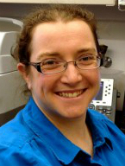Detection and characterization of RB1 mosaicism in patients with retinoblastoma receiving cfDNA test Journal Article
| Authors: | Gao, C.; Patel, J.; Robbins, M.; Gedvilaite, E.; Bowman, A. S.; Arora, K.; Vanderbilt, C.; Brannon, A. R.; Friedman, D. N.; Kennedy, J.; Fiala, E.; Ceyhan-Birsoy, O.; Dunkel, I. J.; Weigelt, B.; Francis, J. H.; Reis-Filho, J. S.; Abramson, D. H.; Mandelker, D. |
| Article Title: | Detection and characterization of RB1 mosaicism in patients with retinoblastoma receiving cfDNA test |
| Abstract: | Importance: Plasma cell-free DNA (cfDNA) testing is increasingly used for disease diagnosis and monitoring in retinoblastoma, with RB1 allele fraction in cfDNA actively corresponding to disease status and treatment response. However, while RB1 mosaicism has been reported in retinoblastoma, its clinical implications and potential impact on cfDNA testing remain unclear. Objectives: To identify RB1 mosaicism using paired plasma and buffy coat (containing lymphocytes, monocytes, granulocytes, and platelets) DNA testing, and to characterize the implications of RB1 mosaicism on cfDNA testing outcomes. Design, Setting, and Participants: In this cross-sectional study, participants with retinoblastoma underwent testing with MSK-ACCESS (Memorial Sloan Kettering-Analysis of Circulating cfDNA to Examine Somatic Status), a clinical assay that combines plasma cfDNA and buffy coat genomic DNA sequencing, enabling the detection and differentiation of somatic, heterozygous, and mosaic variants, between July 2020 and April 2024 at the Memorial Sloan Kettering Cancer Center. Mosaic findings from MSK-ACCESS were correlated with those from a subgroup of patients who concurrently underwent testing using the MSK-IMPACT germline assay. Data analysis was performed from April to September 2024. Exposure: RB1 mosaicism in retinoblastoma. Main Outcomes and Measures: The RB1 variant allele fractions in cfDNA and buffy coat genomic DNA were used to detect RB1 mosaicism. Results: A total of 136 consecutive patients with retinoblastoma (median age at diagnosis, 1.0 year [IQR, 0.4-1.7 years]; 74 [54.4%] female; 67 with bilateral disease and 69 with unilateral disease) who underwent testing with the MSK-ACCESS assay were included. RB1 mosaicism was identified in buffy coat DNA from 20 patients (14.7%), with consistent results detected in all 11 participants tested concurrently by the MSK-IMPACT (Memorial Sloan Kettering-Integrated Mutation Profiling of Actionable Cancer Targets) germline assay. Four participants with RB1 mosaicism previously tested negative for germline RB1 variants by external laboratories. Compared with heterozygous participants, participants with RB1 mosaicism had a lower risk of developing bilateral disease (91.7% vs 55.0%, respectively; difference, 36.7% [95% CI, 13.8%-59.6%]; P =.002). In cfDNA, the mosaicism variant was detected both before and after treatment, with variant allele fraction initially decreasing after treatment but then stabilizing at levels consistent with mosaicism, despite the absence of clinical disease. Conclusions and Relevance: The accurate detection and quantification of RB1 mosaicism are crucial. RB1 mosaicism should be considered when RB1 variants persist in cfDNA after treatment without evidence of disease; failure to do so may lead to false-positive results and overtreatment in patients with RB1 mosaicism. Identifying RB1 mosaicism may improve patient counseling, inform treatment decisions, and enhance surveillance efforts. © 2025 Gao C et al. |
| Journal Title: | JAMA Ophthalmology |
| Volume: | 143 |
| Issue: | 7 |
| ISSN: | 2168-6165 |
| Publisher: | American Medical Association |
| Publication status: | Published |
| Date Published: | 2025-07-01 |
| Online Publication Date: | 2025-05-08 |
| Start Page: | 562 |
| End Page: | 568 |
| Language: | English |
| DOI: | 10.1001/jamaophthalmol.2025.1079 |
| PUBMED: | 40338593 |
| PROVIDER: | scopus |
| PMCID: | PMC12062978 |
| DOI/URL: | |
| Notes: | Article -- MSK Cancer Center Support Grant (P30 CA008748) acknowledged in PDF -- MSK corresponding authors are Diana Mandelker and David Abramson -- Source: Scopus |
Altmetric
Citation Impact
BMJ Impact Analytics
MSK Authors
Related MSK Work



















